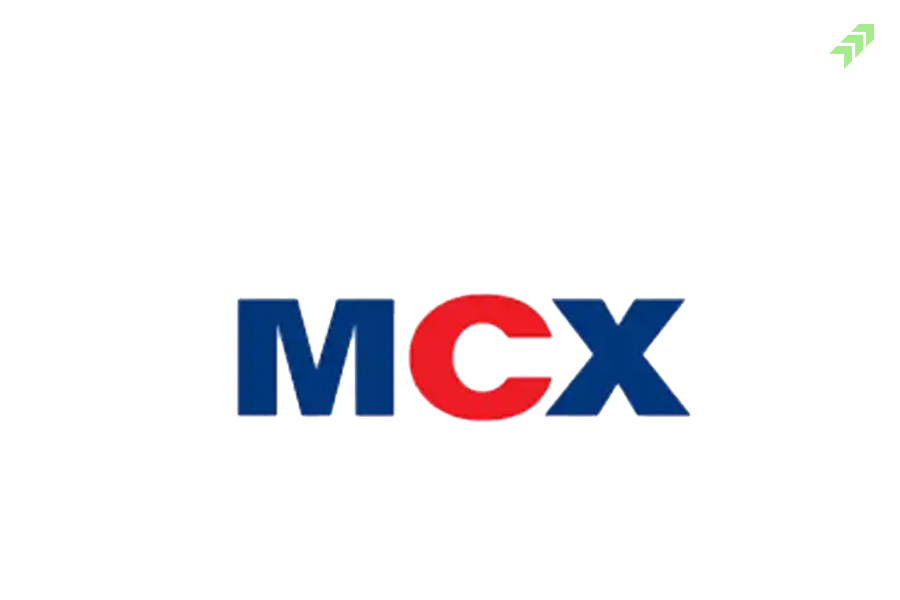Square off
Squaring off is a trading style used by investors/traders in which a trader buys or sells a specific quantity of an asset and then reverses the transaction later in the day in the hope of profiting. Square off occurs prior to the stock market’s closing time. The purpose of a square off is to ensure that all open positions are closed or exited from.
Short selling
In Short selling a trader or investor sells a stock he does not own. It is a trading strategy that entails borrowing a security from a broker, selling it in the market, and then buying it back when prices have fallen to return it to the broker. Short selling for beginners can be very risky as if the price did not fall or instead rises rapidly, it could result in big losses and capital erosion.
The Spot Market
Spot trading, also known as the cash market, involves directly purchasing or selling currency. Delivery of the asset is often immediate. When a buyer enters into a cash market purchase transaction, he or she must pay the current rate, also known as the spot rate.
Swaps
Swaps are financial derivative contracts in which two parties exchange financial obligations. The cash flows are based on a notional principal amount agreed upon by both parties without any principal exchange. The amount of cash flows is determined by an interest rate. One cash flow is generally fixed, while the other fluctuates based on a benchmark interest rate. The most commonly used category is interest rate swaps. Swaps are over-the-counter contracts between businesses or financial institutions that are not traded on stock exchanges.
Stock Split and reverse Stock Split
A stock split occurs when the company’s board of directors increases the number of outstanding stocks in order to increase the stock’s liquidity while keeping the market cap constant. A stock split increases the number of outstanding stocks while decreasing the individual value of each stock, but the company’s overall market cap and the value of each shareholder’s stake remain unchanged. A lower share price may make the stock more appealing because it is less expensive.
The process of reducing the number of shares outstanding in a company is known as reverse stock split. If an investor owns 100 shares of a company and the board of directors announced a 2-for-1 reverse stock split, the investor will end up with 50 stocks. The total share value would remain constant. If the 100 shares were worth INR 500 each before the reverse split, the fifty shares would be worth INR 1000 each after the split. In either case, total investment remains INR 50,000. On the other hand, It is frequently used to assist a company in meeting the minimum requirements to remain listed on an exchange.
SIP
It is a planned and simple approach to investing that assists you in instilling the habit of saving – whether weekly, monthly, or quarterly – and gradually building wealth for the future. If you invest consistently in this manner, you may find it easier to meet your financial goals. SIPs have power of compounding and rupee cost averaging. Power of compounding occurs when the returns on your investments begin earning returns. In theory, this is a straightforward concept. However, its practical implications are significant; rupee cost averaging occurs when you buy more units when the fund’s Net Asset Value (NAV) is low and fewer units when the NAV is high. It essentially averages out your purchasing costs over the life of the investment.
Short Position
The opposite of going long is called short. When a trader/investor is bearish on a particular security / index, he/she sells or short an underlying asset thinking the prices will go down.
Soft commodities
They are more volatile because their pricing mechanism is influenced by a variety of external factors. The production of such goods is heavily influenced by the environmental conditions of a country. It is one of the reasons why agrarian economies are more vulnerable to events such as climate change.
- Agriculture – rice, wheat, mango guava, sugarcane, cotton, etc.
- Livestock – Milk, Red Chili, sugar, egg, Cardamom
Security Market Line
SML also known as the characteristic line is a line drawn on a chart that represents the capital asset pricing model graphically. The chart’s x-axis represents risk (beta), and the chart’s y-axis represents expected return. It depicts an individual security’s expected rate of return as a function of systematic, non-diversifiable risk. Individual risky securities’ risk reflects the volatility of their return rather than the return of the market portfolio. Individual risky securities’ risk reflects the systematic risk. A security’s market risk premium is determined by where it is plotted on the chart in relation to the SML.
SML = Risk-Free Rate + [Beta * (Expected Market Return – Risk-Free Rate)]

Money managers and investors frequently use the security market line to evaluate an investment product that they are considering including in their portfolio. The security market line can be used to determine whether a security has a favourable expected return compared to corresponding level of risk.
When plotting a security on the SML chart, it is viewed undervalued if it appears above the security market line because the position on the chart indicates that the security offers a higher return against its inherent risk. If, on the other hand, the security plots below the SML, it is considered overpriced because the expected return does not outweigh the inherent risk.
Sectoral funds
Sector-specific mutual funds invest in the specific sector of the economy, such as communication, healthcare, information technology, infrastructure, etc. Because fund performance is highly correlated with sector performance, the timing of investment is critical, particularly if the sector is cyclical. These funds can only diversify among companies within sectors, making them vulnerable to cyclical economic trends and potentially risky.
Share Buyback
Share repurchase is the re-acquisition of its shares by a company higher than the market price. Buybacks decreases the number of outstanding shares in the market. They are tax efficient and are used when a company has excess cash but no long-term project to invest in, to increase promoter holding and thus consolidate control of the company. There are numerous reasons for conducting a stock buyback.
- Improve the profitability on a per-share basis
- To consolidate their stake in the company.
- To prevent other companies from taking over.
- To support the share price from falling in the market.
Small cap funds
Small-cap funds invest in all companies with a market capitalization of less less than 500 cr and companies ranked less than 250th on the stock market. Investing in small-cap funds carries the highest risk and requires a longer investment time horizon than investing in large and medium-cap funds, but small-cap stocks can act as a portfolio cushion and provide high value. Small-cap funds can suffer significant capital erosion when the market begins to fall.
Sector-specific fund
Sector-specific mutual funds invest in a specific sector of the economy, such as banking, pharmaceuticals, information technology, and infrastructure. Because fund performance is highly correlated with sector performance, timing of investment is critical, especially if the sector is cyclical. These funds can only diversify among companies within sectors, making them vulnerable to cyclical economic trends and potentially risky.
SWP
STP allows an investor to withdraw funds from an investment on a set schedule. The withdrawal of mutual fund units from his mutual fund scheme can be either fixed or variable. The task can be scheduled every month, quarterly, semi-annually, or annually, depending on the investor’s goals and needs. Customizations in systematic withdrawal plans allow you to withdraw only the capital gains on your investment or a set amount. SWP plans are typically used in retirement, where retirees want a consistent, regular income for a long period of time to meet their financial needs.
STP
Everyone has heard of a Systematic Investment Plan (SIP), but few have heard of a Systematic Transfer Plan (STP). A SIP enables an investor to be dedicated and punctual in his investment objective over time, whereas a STP enables an investor to transfer a fixed amount of funds from a specific scheme to a targeted scheme on a regular basis. Under Systematic investment plan, an investor can transfer funds from one scheme to various other schemes which are being operated by single asset Management Company. This method is commonly used for portfolio rebalancing. Assume you made a one-lakh-rupee investment five to six years ago. Now you believe the market has reached its peak and you wish to be cautious. You believe the market is nearing its peak and you wish to be cautious. You can use a systematic transfer plan to transfer your funds to another targeted scheme while remaining invested in the markets.
Short term capital gain (STCG)
Short term capital gain refers to any capital gain/profit which an individual gets on sale of short term capital assets. Short term capital assets refer to any asset owned by investors for under than 36 months from date of initial transfer but in case of stocks that are listed on a recognized stock exchange, the time period has been reduces to 12 months.
Speculator
Speculators are derivative market risk-takers. Speculation requires a trader to enter a market and bet on whether the price of a security or asset will rise or fall. They try to make money by using derivatives with a lot of leverage. In comparison to the hedgers, they have a completely opposing viewpoint. This difference of opinion allows them to profit handsomely if their bets are correct. In the above example of hedger, you purchased a put option to protect yourself from a drop in stock prices. The speculator, your counterparty, will bet that the stock price will not fall. If stock prices do not fall, you will not exercise your put option. As a result, the speculator keeps the premium and profits.
Slippages
Slippage in trading is the difference between an expected price and the price at which the trade is executed. Slippage occurs when there is volatility in market and the bid/ask spread changes between the placing the order and the time it get executed. Slippage has no negative or positive connotation because any difference between the intended execution price and the actual execution price qualifies as slippage. But for sake of calling, Negative slippage occurs when the ask price in a long trade rises or the bid price falls in a short trade. Positive slippage means that the ask price in a long trade has decreased or the bid has increased in a short trade.
Stop loss
A stop-loss is designed to limit an investor’s loss on a security position. For example, setting a stop-loss order for 10% below the price at which you bought the stock will limit your loss to 10%. Suppose you just purchased Microsoft (MSFT) at $20 per share. Right after buying the stock, you enter a stop-loss order for $18. If the stock falls below $18, your shares will then be sold at the prevailing market price.
Open FREE Demat Account in less than 10 minutes
20
Get Instant Pledge Benefits* + Zero Delivery Brokerage* to maximize your returns
10
Per order only (No hidden charges)


















